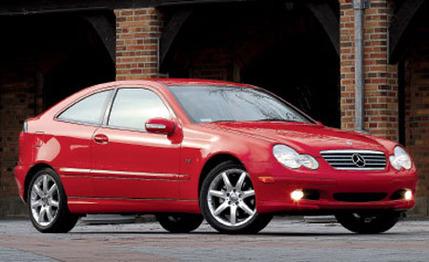
 Short Take Road Test
Short Take Road Test
You might have noticed that periodically we find occasion to be unkind to a vehicle. The introduction of the Mercedes-Benz C230 Kompressor "sports coupe" for the 2002 model year was one such occasion ( C/D, October 2001).
Forget for a moment our skepticism about the feasibility of any luxury automaker introducing a hatchback model to the small-car-phobic American public. BMW tried precisely the same thing with the 318ti between 1995 and 1999-with spectacularly poor results.
Forget, too, that this Mercedes looked, with its bulging bum and two-pane glass backlight, like a modern Renault (a company that was shamed out of America after foisting the Alliance on our fair country).
No, we were not rude to Mercedes for these reasons. Our real concerns had to do with the function of the automobile: (1) The engine, a 2.3-liter iron-block supercharged four-cylinder, was a far ruder thing than your humble author is on his worst days; (2) the standard-issue six-speed manual transmission was described by us as ropy, rubbery, and uncertain, not to mention just plain poor; (3) despite its "sports coupe" moniker, the C230 was not very sporty.
For the 2003 model of the C230, Mercedes has largely addressed our engine complaint with an all-new 1.8-liter, all-aluminum supercharged four-cylinder. On paper, this engine would seem to be a step backward for Mercedes. It's down about a half-liter of displacement compared with the old engine, and it makes less peak horsepower and torque. And it makes those peaks at higher revs. The old 2.3-liter-still the base engine in the SLK hardtop roadster for 2003-makes 192 horsepower at 5500 rpm and 200 pound-feet of torque at 2500 rpm. The new 1.8-liter engine makes 189 horsepower at 5800 rpm and 192 pound-feet of torque at 3500 rpm. Indeed, the sprint to 60 mph for the 1.8-liter 2003 model is an unremarkable 8.1 seconds-more than a half-second slower than the 2002 model. We attribute this, in part, to an engine-management system that will not allow for abusive standing starts. Try as you might, the engine will not rev above 4000 rpm with the clutch pedal in. This is not something most owners-the majority of whom we don't anticipate will go bracket drag racing-need worry about.
On the other hand, the new motor allows the hatch to go another four or five miles on each gallon of gas, depending on whether you get the six-speed manual or the $1325 optional five-speed automatic.
Even better, with this engine the C230 is, if not exactly transformed, at least a more pleasant thing to use. The previous engine felt weak at low revs, despite its power advantage and greater displacement. Higher in the rev range, the 2.3 was rough. Worse, it sounded as if it had an acute and chronic case of gastrointestinal distress.